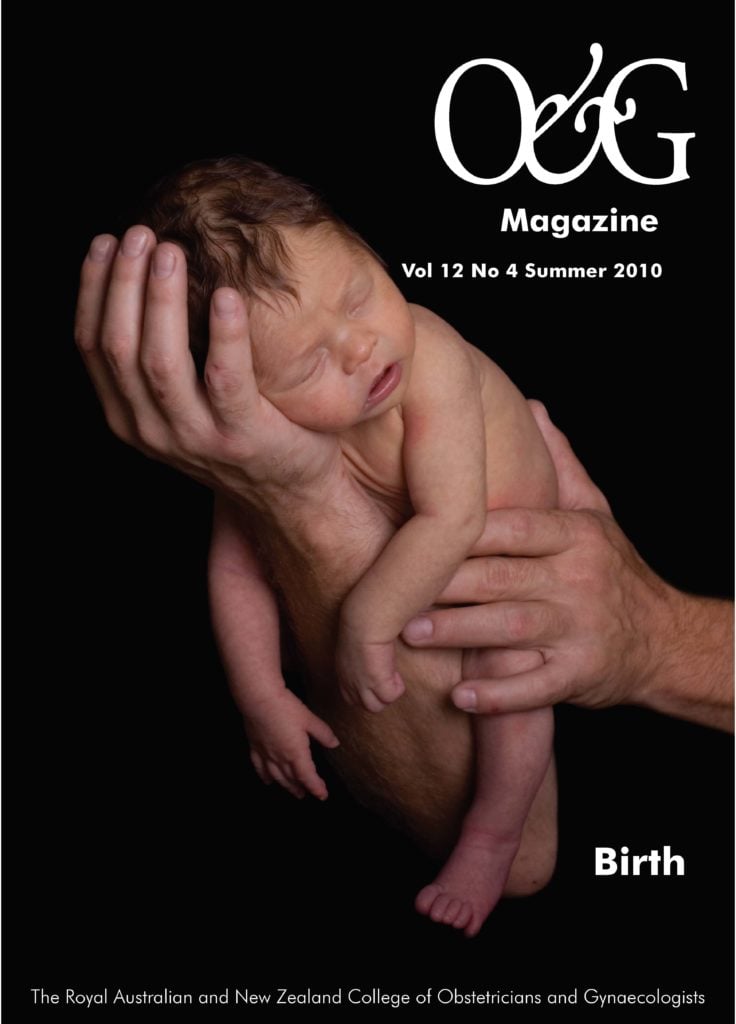Had time to read the latest journals? Catch up on some recent O and G research by reading these mini-reviews by Dr Brett Daniels.
GP Obstetrics
This article, written by a Diplomate from Western Australia, reports an audit of 195 singleton pregnancies managed by the author’s practice from 2007 to 2009. He reports that approximately one-fifth of Western Australian women deliver their babies in rural and remote areas of the State, with most of their care provided by GP obstetricians. In the current study, higher risk women, including those with a BMI of greater than 40, women with type 1 diabetes or in preterm labour before 35 weeks gestation, were transferred to a tertiary centre. Of the remaining population, there remained women with antenatal risk factors including previous caesarean section (14 per cent), preeclampsia (five per cent) and gestational diabetes (eight per cent). The author reports an induction rate of 33 per cent and an epidural rate of 35 per cent, perhaps higher than in many centres. Overall rates of complications in the study practice are reported to be comparable to those in other centres in the State. The article provides an insight into obstetric practice outside major metropolitan centres and concludes that care for low-risk women in these centres by GP obstetricians appears a safe practice.
Kirke AB. How safe is GP obstetrics? An assessment of antenatal risk factors and perinatal outcomes in one rural practice. Rural and Remote Health 2010; 10:1545.
Laparoscopy in pregnancy
About one in 600 women require non-obstetric abdominal surgery in pregnancy, most commonly for appendicitis,
biliary disease, ovarian masses or torsion. In recent years, laparoscopic approaches to these conditions have become more common in both pregnant and non-pregnant women. There are, however, often conflicting opinions on the fetal and maternal safety of laparoscopic surgery during pregnancy, making the decision between operative or conservative management stressful for both the patient and the doctor. This retrospective case review reports on 94 pregnant women who had non-obstetric abdominal surgery during pregnancy in a university hospital between 1993 and 2007. Cases included appendectomy (40 open, nine laparoscopic), cholecystectomy (one open, 39 laparoscopic) and salpingectomy/cystectomy (five laparoscopic). Open procedures tended to be performed more often in the third trimester. Unfortunately, birth data were available for only 54 of the patients identified in the study. There were four fetal losses, three within seven days of surgery and one loss seven weeks later. Two of these were first trimester losses following open appendectomy, while there was a loss at 15 weeks gestation following laparoscopic salpingectomy at eight weeks gestation. There was one stillbirth on post-operative day two following open surgery for a perforated gangrenous appendix at 23 weeks gestation. There was a preterm delivery rate of 14 per cent in the laparoscopic group and 19 per cent in the open group. In total, the authors report perinatal complications in 37 per cent of the laparoscopic group and 42 per cent of the open surgery group. They concluded that, while there is certainly perinatal morbidity related to non-obstetric surgery in pregnancy, this is often related to maternal factors, for example, infection, rather than surgical technique. The authors also contend that laparoscopic surgery appears to be as safe as an open approach in pregnant patients.
Corneille MG, Gallup TM, Bening T, et al. The use of laparoscopic surgery in pregnancy: evaluation of safety and efficacy. The American Journal of Surgery 2010; 200:363-367.
Metformin and AMH
In women of reproductive age, anti-Mullerian hormone (AMH) is secreted by the granulosa cells of developing follicles. As it is excreted exclusively in the ovaries’ serum, AMH concentrations in women may reflect the size of the ovarian follicle pool. In polycystic ovarian syndrome (PCOS), there is an increase in the number of pre-antral follicles and, consequently, a high AMH has been reported in these women. The insulin-sensitising drug metformin has been shown to induce ovulation in some women with PCOS, however, the effect can be variable. This small study of 40 patients measured serum and antral follicle levels of AMH and androgens in four groups: ovulatory women with PCOS receiving metformin; anovulatory women with PCOS receiving metformin; women with PCOS not treated with metformin; and a non-PCOS control group. The results showed higher pre-treatment levels of AMH in both the serum and follicular fluid in all three PCOS groups compared to the control group. Following treatment with metformin, there was a significant decrease in both serum and follicular AMH levels in both ovulatory and anovulatory women. This was accompanied by an improvement in serum measures of androgens and insulin resistance. While this study is small, it provides further insight into the mechanism of action of metformin in some women with PCOS.
Daniels J, Falbo A, Rocca M, Russo T, et al. Serum and follicular anti-Mullerian hormone levels in women with polycystic ovary syndrome (PCOS) under metformin. Journal of Ovarian Research 2010; 3:16.






Leave a Reply